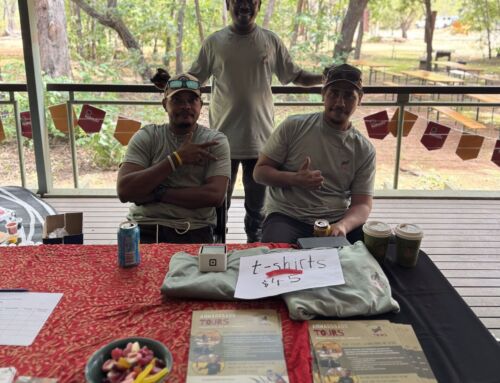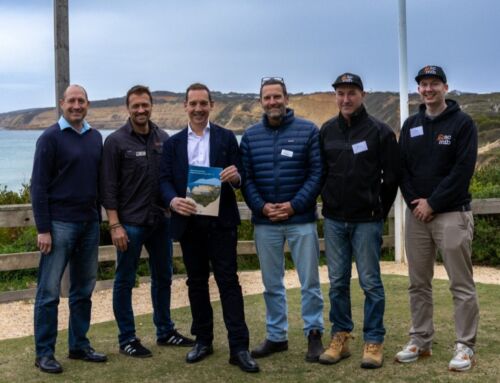TRC Tourism recently completed a project in Western Australia that sought to apply the power of circles and proximity to guide regional Perth’s trail planning. We spoke to our consultant Chris Ord about the process and the outcome.
“The longest absence is less perilous to love than the terrible trials of incessant proximity,” wrote American poet and playwright Edna St Vincent Millay. Musing on the intricacies of love, you could – with some creative thinking – transpose the same sentiment to the intricacies of strategic trail network design. A long bow drawn on first pass, however it was a core lesson that lay at the heart of a recent project that TRC Tourism undertook for the Western Australia Department of Local Government, Sport and Cultural Industries.
We were charged with investigating how ‘concentric circles’ could be applied as a framework for trail planning. With an open brief of ‘discovery’, where the project outputs were undefined, TRC Tourism consultant, Chris Ord, set about learning how factors of proximity, co-location, visitor behaviour, travel time, critical mass and oversupply could assist in focusing the direction of trail planners.
“At its simplest, the essence of the project was about establishing more structured thinking around what type of trails you should create, how many, where, why, for whom? And, importantly, how the regional context –other trail networks that exist nearby – affects the planning of any development,” Chris says. “More trails are not always the answer. Especially when they are of a similar type, targeting a similar user in a space that is close by.”
Chris notes that even the most obvious logic sometimes requires a degree of measured input to confirm validity, and in this case the test was: would critical mass create more use, or spread it too thin?
To develop the concentric circle trail planning framework, a study area was identified as the circle surrounding the Perth metropolitan area. This was initially defined by drive time, as one of the primary considerations when active Perth residents make decisions about which trail network to visit. The other factor was activity: do the trails service mountain biking, hiking/walking, trail running or a mix? Were they designated as local trails, regional, or signature? What was the management support structure of the trails? “And importantly, were trail networks (existing or planned) competing unnecessarily and therefore diluting the destination’s strength of offer?” Chris says.
To establish the answer, a review of the radial corridor surrounding the ‘source market’ of metropolitan Perth was undertaken via desktop and field study. The study area was limited to a three-hour drive. This identified existing and planned trail networks and their characteristics of type, volume, users, and management. “From there, we mapped each network, which gave a visual and statistical overview based on drive time between, and proximity to, both source market and each other. A review of the type of network was undertaken, and of the desired user market,” Chris says. “This identified if a planned or existing trail network was located too close to another of similar type. Research established that any networks of similar profile within 1-2 hours’ drive of each other were potentially not ideal in terms of co-location and competition.”
However, the process also identified that trail networks could be located a similar distance from the source market, but if far enough away from each other – at least 2 hours – then it might be justifiable to develop a network that attracts a similar visitor market.
“The study also identified that the source market itself was not a singular one. Residents of north Perth could travel one hour to a trail network in the north or east, making it ideal for quick-trip visitation (such as training and 1–3-hour experiences),” Chris says. However, networks in the south, such as Dwellingup required a bigger travel time investment and so were more likely to be weekend and overnight destinations for northern residents. And the opposite is true for southern suburb Perth residents.”
“This profiling can then help guide not only trail planning, but also marketing. Dwellingup might market a different message to northern Perth residents as a weekend destination, while southern residents might still be lured by quick trip messaging. This can also indicate which visitors might spend more in a region, based on length of stay.”
Additionally, the study revealed directional advice for destinations that might be located near existing trail networks that already boast a high critical mass of trail quality and network distance. “Rather than try to compete, the concentric analysis suggests a destination that is co-located to an already advanced trail cluster could be better to leverage that proximity via other ‘added-value’ attractions. Trying to compete directly by investing in their own trails at a similar level, could lead to visitor dilution for both.”
Perhaps the quote to capture the essence of planning trail development within a concentric circle framework is, without reading the report proper, best left to American novelist, Frank Herbert: “The proximity of a desirable thing tempts one to overindulgence. On that path lies danger.”






